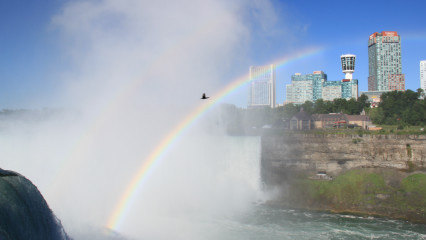
当前课程知识点:Culture and Tourism(International Edition) > Week 3: Heritage System: Managing and Safeguarding World Heritage Sites > 3.2 Role of the ISCCL and Cultural Landscape (1) > 3.2.1 Role of the ISCCL
返回《Culture and Tourism(International Edition)》慕课在线视频课程列表
返回《Culture and Tourism(International Edition)》慕课在线视频列表
我现在将继续讨论第三个话题
如果国际文化景观科学委员会稍微谈谈它的作用和责任的话
这是一个关于国际古迹遗址理事会的讨论
我之所以选择谈论这个话题
是因为它有助于理解世界遗产是如何运作的
也有助于理解文化景观在这个体系中的作用
所以国际古迹遗址理事会
是建立在威尼斯宪章的基础上
在1964年威尼斯非常关注建筑
它是国际古迹遗址理事会(ICOMOS)成立的基础
该理事会于1965年成立一年
国际古迹遗址理事会的一些正确目标是为非政府组织提供服务
这些组织作为一个世界性组织将占有一席之地
遗产行业的人可以加入其中
通常是建筑师 考古学家 历史学家 规划师景观建筑师等
国际古迹遗址理事会的结构是由一个管理系统的董事会
和一个每三年选举一次的民选董事会组成
大约有一百二十个全国委员会
因此世界上每一个想加入国际古迹遗址理事会的国家
都可以成立一个全国委员会
比如澳大利亚国际古迹遗址理事会
或者中国国际古迹遗址理事会
有一系列国际科学委员会目前有28个
这些社区的主席是所谓的科学委员会的一部分
与国家委员会和科学委员会一起
这些组织的领导人可以组成一个咨询委员会
为国际古迹遗址理事会提供咨询 所以它有点复杂
目前全球约有1万名会员
你现在可以看到国际文化景观科学委员会的一些情况
它是二十八个国际组织之一 我认为有二十九个
我想是二十八或二十九 因为有新的委员会组成
就像我说的不同科学的主席
28或29个科学委员会组成了国际古迹遗址理事会的科学委员会
向国际古迹遗址理事会咨询委员会和执行委员会提供建议
它是关于文化遗产保护的技术问题
因此我们使用的ISCCL代表国际文化景观科学委员会
被称为混合委员会
它由国际古迹遗址理事会(ICOMOS)
和国际风景园林联合会(IFLA)的成员组成
在其法规中ISCCL的一个目的
是为了促进理解保护和明智地利用景观遗产为公共和私人利益
并以维持和提高生活质量为一般目的
对我来说这份声明很好地抓住了遗产恢复力
可持续性 权利 个人幸福感的意义
这一点告诉国际竞争法委员会
关注景观的历史社会和自然层面
并促进对概念思维和实际地面管理的综合和整体方法
委员会使用“景观”一词即各种主要景观
包括有形的或物质的无形的或非物质的和相关的属性和价值
例如包括土著和当地社区景观 耕作的农村景观
城市和工业景观 海上 陆地景观 设计的公园和花园
建筑物 纪念碑 城市中心
城镇和村庄以及考古遗址
ISCCl建议国际遗址保护协会对文化景观
包括被提名或指定为世界遗产科学的文化景观的识别
记录评估保护和展示进行研究
委员会通过在线讨论年度会议再版和交流
以及组织关于实地访问的会议讲习班等
专门专题工作组开展工作
在2018年9月ISCCL有170个成员
代表50多个国家
七名成员来自中国
ISCCL有一个机构会员——勒内·佩切尔图书馆
该图书馆位于比利时负责维护档案馆
该委员会本身成立于1971年在巴黎作为一个科学委员会的历史花园
1999年该委员会的重点从花园更广泛的概念
文化景观 一个术语作为一个类别的文化遗址介绍
是由联合国教科文组织世界遗产委员会在1992年确定
国际文化景观科学委员会以编写
《佛罗伦萨历史园林宪章》而闻名
该宪章于1982年被国际古迹遗址理事会采纳为
《威尼斯宪章》的附件或附录
在承认花园是活遗产的时代前辈被视为创新
因为历史花园中的植物群落继续生长和变化
作为一个考古遗址 它与建筑物的意义大不相同
以前在《威尼斯宪章》中被认为是重要的
就我个人而言 我于2009年成为委员会成员
并于2014年至2017年担任委员会国际主席
我已经在委员会这边列出了目标
我只想说一点委员会的结构所有的国际古迹遗址理事会
科学委员会的结构都是由国际古迹遗址理事会规定的
2005年在中国西安举行的国际古迹遗址理事会大会通过的原则
ISCCL有一个主席团由一名主席六名副主席
一名秘书和财务主管组成
主席团负责监督委员会并确保符合爱尔兰和原则的要求
或者ICOMOS成员可以加入ISCCL
他们可以加入两个类别中的一个
专作为家或贡献成员或作为准成员
核心务成员可以被选为顾问成员,
委员会的工作方式是成立工作组 负责具体项目
目前国际竞争法委员会共有16个工作组
这方面的一个重要问题是所有成员的工作都是
自愿的因此没有一个是相互联系的
部分原因是委员会真的没有钱
这里列出了所有的工作组
以及这些工作组目前的便利性
我只想指出其中的几个
有人会注意这些网站
这是非常非常复杂的
希望现在能奏效
作为一个重要的文献组
我在3月由约克带领 他正在做一个世界上所有与文化景观相关的
主要参考文献的文献目录
现在大约有一百二十页 而且每年都更新
有一个是由来自意大利的分析师主持世界乡村景观计划
我将在下一个主题中谈到这一点
有一个小组对佛罗伦萨图表进行了修正
他们说法国宪章已经有45年的历史了
因此它所倡导的一些哲学和思想已经过时了
所以需要做一些工作来更新这个文档
一些比赛结果主要集中在几年之后
我稍后会详细讲的是印度德里的ICOMOS大会上的
ICOMOS向国际文化景观科学委员会提交了由ICOMOS开发的大型文本
这些技术涉及乡村景观和历史悠久的城市公园
我们分别发展了六年和九年需要长时间的讨论和不断的修改
在这两种情况下一个关键问题是制定与特定遗产类别有关的原则
这些遗产类别在建造过程中大量浪费
与全球所有或至少大部分地区都有关
真正的科学委员会是一个进行这些讨论的好地方
因为他们代表了这么多来自这么多国家的人
所以我们可以在不同的文化背景下谈论思想
综上所述国际古迹遗址理事会国际科学委员会在
开展文化遗产保护研究和开发技术方法方面发挥了重要作用
无论是在世界范围内还是在国家地区地方都具有重要意义
我也为文化遗产专业人士提供了在国际一级工作的机会
-1.1 Introduction course outline and UNESCO World Heritage Program
--1.1.1 Introduction of culture and tourism course outline
--1.1.2 Introduction of UNESCO World Heritage Program(1)
--1.1.3 Introduction of UNESCO World Heritage Program(2)
-1.2 Cultural Heritage-1
--1.2.1 The meaning of culture heritage
--1.2.2 Criterion(i): masterpiece of human creative genius
--1.2.3 Criterion(ii): exhibit important interchange of human value
--1.2.4 Criterion(iii): bear a unique or at least exceptional testimony
--How can the public understand the importance of heritage?
-1.3 Cultural Heritage-2
--1.3.1 Criterion(iv): an outstanding example in human history
--1.3.2 Criterion(v): represent a culture or human interaction with environment
--1.3.3 Criterion(vi): associated with living traditions of outstanding universal significance
-1.4 Natural Heritage
--1.4.1 Natural heritage features, formations and criterions
--1.4.2 Cases studies of natural heritage
--Cultural landscape meanings: The case of West Lake, Hangzhou, China
--Week1 quiz
--How to access heritage of your hometown?
-2.1 Mixed Culture and Natural Heritage
--2.1.1 Mixed heritage operational guidelines and cases (1)
--2.1.2 Mixed heritage operational guidelines and cases (2)
--2.1.3 Mixed heritage operational guidelines and cases(3)
-2.2 Authenticity, Integrity and Cultural Routes
--2.2.1 How to determine authenticity and integrity
--2.2.2 Heritage routes and heritage canals (1)
--2.2.3 Heritage routes and heritage canals (2)
--What do you think about cultural heritage categories?
-2.3 Special Heritage and Sustainable
--2.3.1 Physical remains of the history of technology and industry
--2.3.2 Transboundary Heritage, Serial Heritage, Serial/Transnational Heritage
--2.3.3 Intangible cultural heritage
--2.3.4 UNESCO World Heritage and Sustainable Tourism Programme
--Recovering the Memory of Ourselves for the Sustainable Cites
--Week 2 quiz
--What do you think about cultural heritage categories?
-3.1 The Australia’s Heritage System and Sydney Opera House
--3.1.1 The Australian Heritage System
--3.1.2 Case Study: The Sydney Opera House
-3.2 Role of the ISCCL and Cultural Landscape (1)
--3.2.2 Uluru-Kata Tjuta National Park
--3.2.3 Honghe Hani Rice Terraces
-3.3 Role of the ISCCL and Cultural Landscape (2)
--3.3.1 West Lake cultural landscape (1)
--3.3.2 West Lake cultural landscape (2)
-3.4 Rural Landscapes as Heritage
--3.4.1 ISCCL Principles Concerning Rural Landscapes as Heritage
-3.5 Case Study: Mongolian Altai
--3.5.1 Nature Culture Integration & the Mongolian Altai(1)
--3.5.2 Nature Culture Integration & the Mongolian Altai(2)
--Week 3 quiz
--Discussion: What do you think is the role of ISCCL?
-4.1 Introduction of the Meaning of 'landscape’
--4.1.1 Brief introduction of landscape and culture
--4.1.2 The conceptual framework of cultural landscape
-4.2 Landscape Values
--4.2.1 The word “landscape” itself and differences in Western, Eastern
--4.2.2 Cultural significance for heritage source
--Discussion: What do you think the cultural landscape attracts you?
-4.3 Reading the Landscape: Identification and Assessment
--4.3.1 Planning model for heritage conservation management policy
--4.3.2 Cultural landscape resources evaluation steps
--Article: Cultural mapping: Intangible values and engaging with communities with some reference to As
-4.4 Case Study: Wingecarribee Historic Landscape
--4.4.1 Case study:Wingecarribee historic landscape study(1)
--4.4.2 Case study:Wingecarribee historic landscape study(2)
--Week 4 quiz
--Discussion: What should we do to strengthen the protection of cultural landscape?
-5.1 Indigenous Tourism
--5.1.1 Indigenous tourism background
--5.1.2 World heritage and indigenous peoples
--5.1.3 Tourism issues at Canadian indigenous world heritage sites
--Discussion: What challenges indigenous World Heritage faces?
--Article: State conceptions of indigenous tourism in Chile
-5.2 Case Study and Conclusion: Great Expectations for Tourism
--5.2.1 Case study Pimachiowin Aki
--5.2.2 Conclusions:Great Expectations for Tourism
--Disussion: Do you have any experience of indigenous tourism?
--Week 5 quiz
-6.1 The Definition of Heritage in Heritage Performance Study
--6.1.1 The definition of heritage in heritage performance study
--6.1.2 Heritage performance and meaning making
--6.1.3 Two key issues emerging from qualitative study
-6.2 Heritage Performance - Evidence from Australia, England and USA
--6.2.1 Heritage performance - reinforcement
--6.2.2 Heritage Performance - inter-generational communication and social values
--6.2.3 Heritage performance - recognition and respect
--6.2.4 Heritage performance - education
--Article:Theorizing museum and heritage visiting
-6.3 The Conclusion of Heritage Performance
--6.3 The conclusion of heritage performance
--Week 6 quiz
--Discussion: What kinds of heritage performances have you learned in this week?
--Final test



